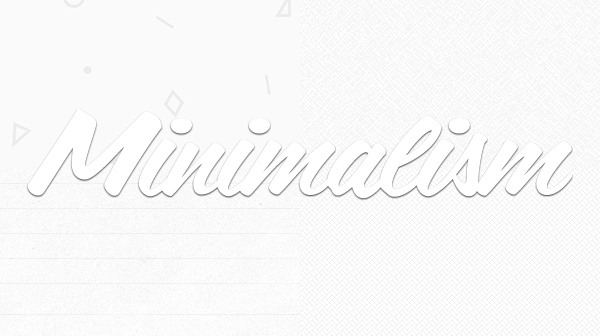Web design used to be about flashy, bright colors, attention-getters and flash animations that were full of movement and activity designed to be extremely noticeable. Front-end design standards have come a long way since those days, with flash quickly becoming a thing of the past and the professional standard for becoming more sophisticated than it has ever been.
The list of best practices for designing a web page in 2013 is long, but there are two staples of a well-designed page that every developer can start with:
-
Subtle Patterns
-
Minimalist Design
These are the two pillars of sophisticated and modern web design. If you pay attention when visiting different sites, you’ll notice that the ones with a really clean and polished look and feel, will almost always exhibit these two qualities.

Subtlety and minimalism show that you aren’t trying to compensate for bad content or be flashy in an effort to get unwarranted attention.
Instead a subtle design tells visitors that the content speaks for itself and doesn’t require a whole cast of bells and whistles to make it more appealing or interesting. It’s the best way to construct a framework for content that you know people are going to be interested in.
So how is it usually done? Let’s look at a few areas where subtle patterns and minimalism come into play.
Colors
The general rule of thumb is that when aiming for a minimalist color scheme, you want to use a lot of white, gray and maybe a little black. Hard colors like deep blue, neon green and bright yellows are definite no-nos and shouldn’t be used outside of a few obscure exceptions.
Background
Depending on the feel of your site, the background should provide a soft, pleasing pattern to frame your content. This is where the idea of subtlety really comes into play. While most text boxes should just be white, or a very light gray, your background can go a little darker with some texture added. For a whole collection of these textures check out subtlepatterns.com.
Font
Font should always be somewhere between light gray and charcoal. On white backgrounds you can get away with the lighter end of the gray spectrum, but generally you’ll want to stick with something a bit darker. Jet black font will work in some situations, as long as it doesn’t clash with the background or come off as too hard on the eyes. Remember that you want to make it pleasant to read, so think along the lines of softness and stay away from anything that pops off the page with a lot of intensity.
Text Boxes
Text boxes walk a fine line between highlighting the text but making sure that it doesn’t pop too much, thereby making the process of reading content more invasive to the eyes. Generally your safest bet for a text box is white, and usually without any texture; though in some situations a very light gray background and a subtle border will do a nice job of showcases a body of text.
Themes and Overall Design
Subtlety and minimalism are for the most part broad web design concepts. If you start there, you can build the rest of your theme and overall design around those two ideas. Seeing as how they’re a big part of what’s dominating trends in web design in our day, you can’t go wrong by using them as focal starting points.
Particularly if you’re dealing with a website for a business, aiming for minimalism and subtlety will help your website take on a more professional and sophisticated feel, which is going to go a long way in ensuring your client’s satisfaction.
